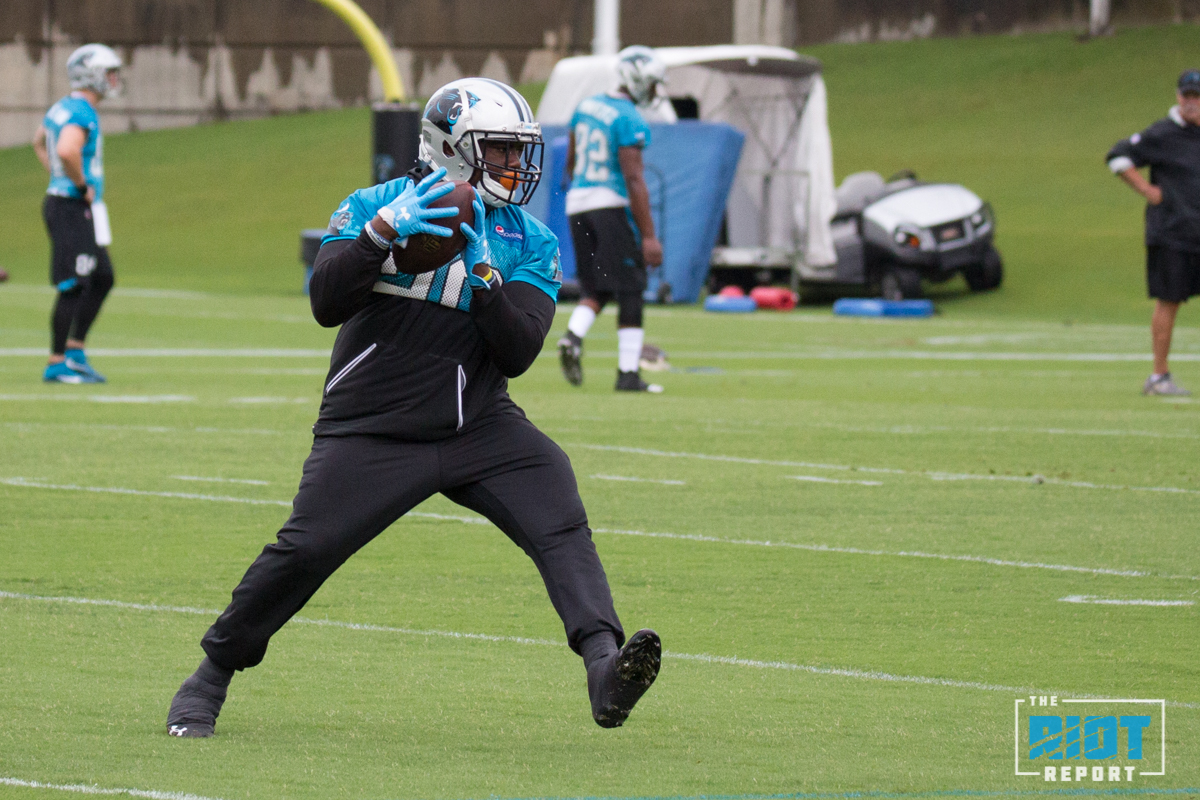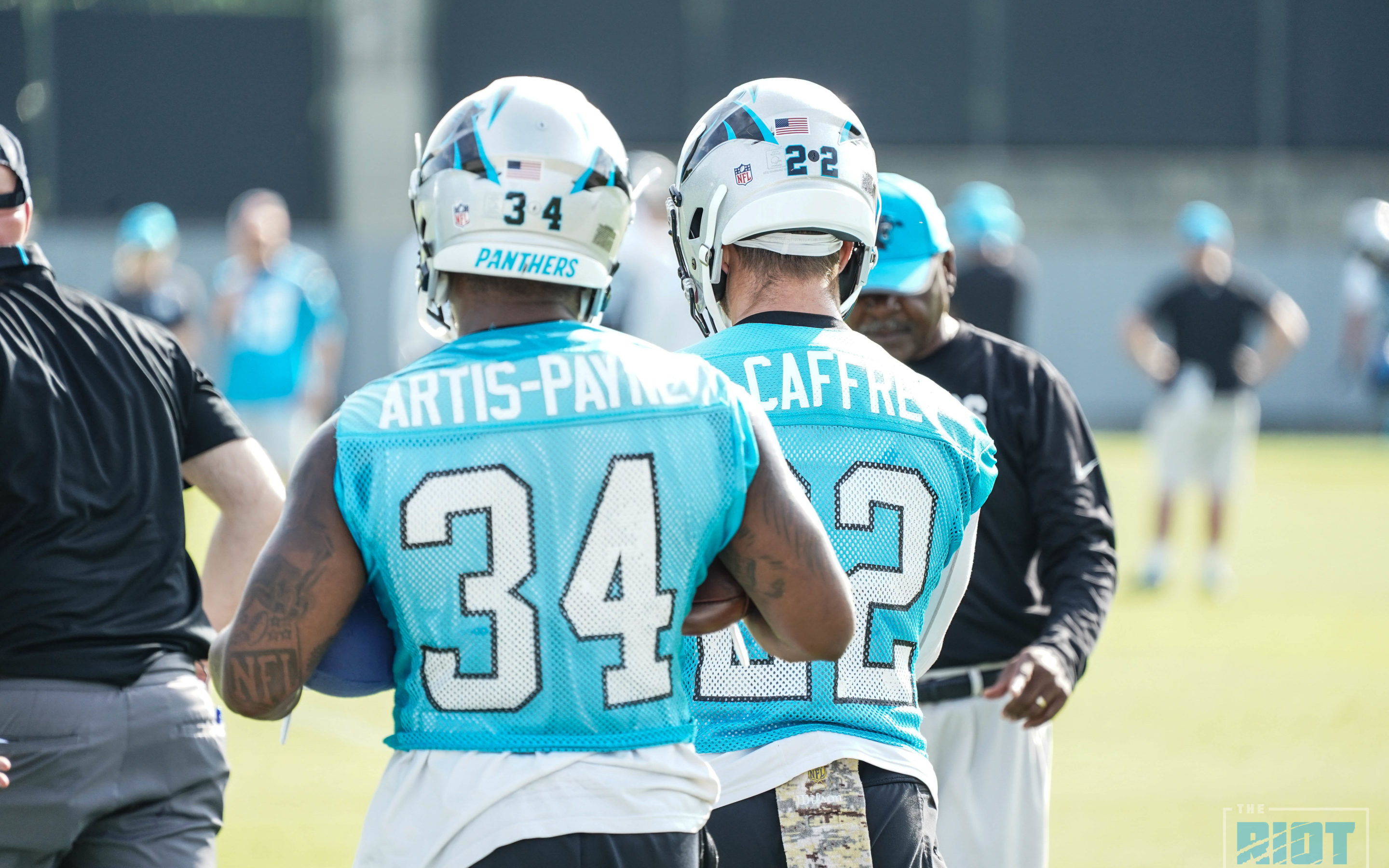As the Panthers move towards training camp, the roster is beginning to take shape, both in terms of the starters and the surrounding depth, and while there is still a lot that can and likely will change between now and the end of training camp, it’s time to take a look at each part of the Panthers’ roster, position by position. While there is always the possibility of a dark horse surprise, there is also a lot than can be said with some degree of certainty. With that in mind, over the next couple of weeks we will explore both where each position group stands and where it might go. Check out our previous iterations below:
Next up in our series are the running backs, a position group that has seen a significant amount of change this offseason with the release of Jonathan Stewart, the additions of CJ Anderson, Kenjon Barner, Elijah Hood and Reggie Bonnafon and the loss of Fozzy Whittaker to injury before training camp even began. Last season, the running backs had a fairly mixed year with both McCaffrey and Stewart averaging under four yards per carry despite some promising games. Of course, some of that lies at the feet of the offensive line and offensive scheme – with Norv Turner taking over the reigns of the offense, there are likely to be a number of changes to the way in which the Panthers look to run the ball, which should help to increase the production of the running game. Despite this, the Panthers will need the running backs to be more effective in 2018, so what should fans be looking for from this group during training camp?
Smash and Dash Remastered

The most notable change compared to last season for the running backs is the replacement of Jonathan Stewart with CJ Anderson, and while entering the offseason it might not have been clear who the Panthers were going to bring in, the writing was somewhat on the wall when it came to Stewart’s future with the team. Stylistically, the two players are quite similar, as both are powerful downhill runners who are at their best when running between the tackles. While Stewart was probably better at this in his prime, in recent years he has seen somewhat of a regression and this change to Anderson should be seen as somewhat of an improvement for the Panthers. Where Anderson marks a definite improvement over Stewart, however, is in his ability to contribute in the passing game. Stewart can only be described as a poor receiver, struggling with drops throughout his career, and while Anderson is not Christian McCaffrey, he has shown a consistent ability to contribute as a dump-off option underneath.
What will be most interesting to watch during training camp is how the Panthers look to use Anderson in both the rushing and passing games. So far during the offseason, the Panthers have run a lot of option plays, and how they look to use Anderson as a part of that could be interesting, with his most natural fit being that of the inside runner in the classic triple-option. The other area where it will be worth keeping a close eye on Anderson is in pass protection. Hopefully, the Panthers will move away from the heavy protection plays that were common under Shula outside of long third downs and red zone plays, but there will be times when the Panthers have to keep a running back in to pass protect. When Stewart was with the team that was typically his responsibility, but now that he is gone it is somewhat unclear whether Anderson will naturally assume that role or whether Alex Armah might see some snaps in these situations. While last season was Anderson’s first expedition into the 1,000 yard club, he has averaged over four yards per carry in every season of his career and his addition should mark an improvement for the Panthers’ rushing attack.

Anderson’s major partner in crime will be Christian McCaffrey, who had a mixed year on the ground last season with some nice outside runs and long gains on zone plays, but struggled on inside power runs. Much of this is not hugely surprising as even the newer, slightly heavier McCaffrey is not going to make his money bashing out four yard carries inside, but rather on outside runs and as a receiver. The Panthers increased interest in the triple option offense seems to suit McCaffrey in this regard, as using him as the speed rusher should put him in position to make the most of his speed and agility. It will be worth watching in what other ways the Panthers look to use him as a ball carrier, as by being intelligent when it comes to his usage as a rusher the Panthers can use him to generate gash plays while having other ways to keep ahead of the chains.
Despite being a running back, McCaffrey’s real value is as a receiver, as he offers a matchup advantage over every linebacker and safety in the NFL, and the vast majority of corners as well. While Anderson offers an improvement over Stewart in terms of being a safety valve underneath, McCaffrey should be seen as a wide receiver in terms of his route tree, with the difference being where he starts his routes. Mike Shula went some of the way towards this last season, but he still underutilized McCaffrey in this regard. What the Panthers will hopefully see this training camp is an almost complete absence of McCaffrey as a pass protector, as using a receiver of this quality as a blocker is a waste; McCaffrey saw a league-leading (for running backs) 113 targets last season, but an increase even on that could well be on the cards.



